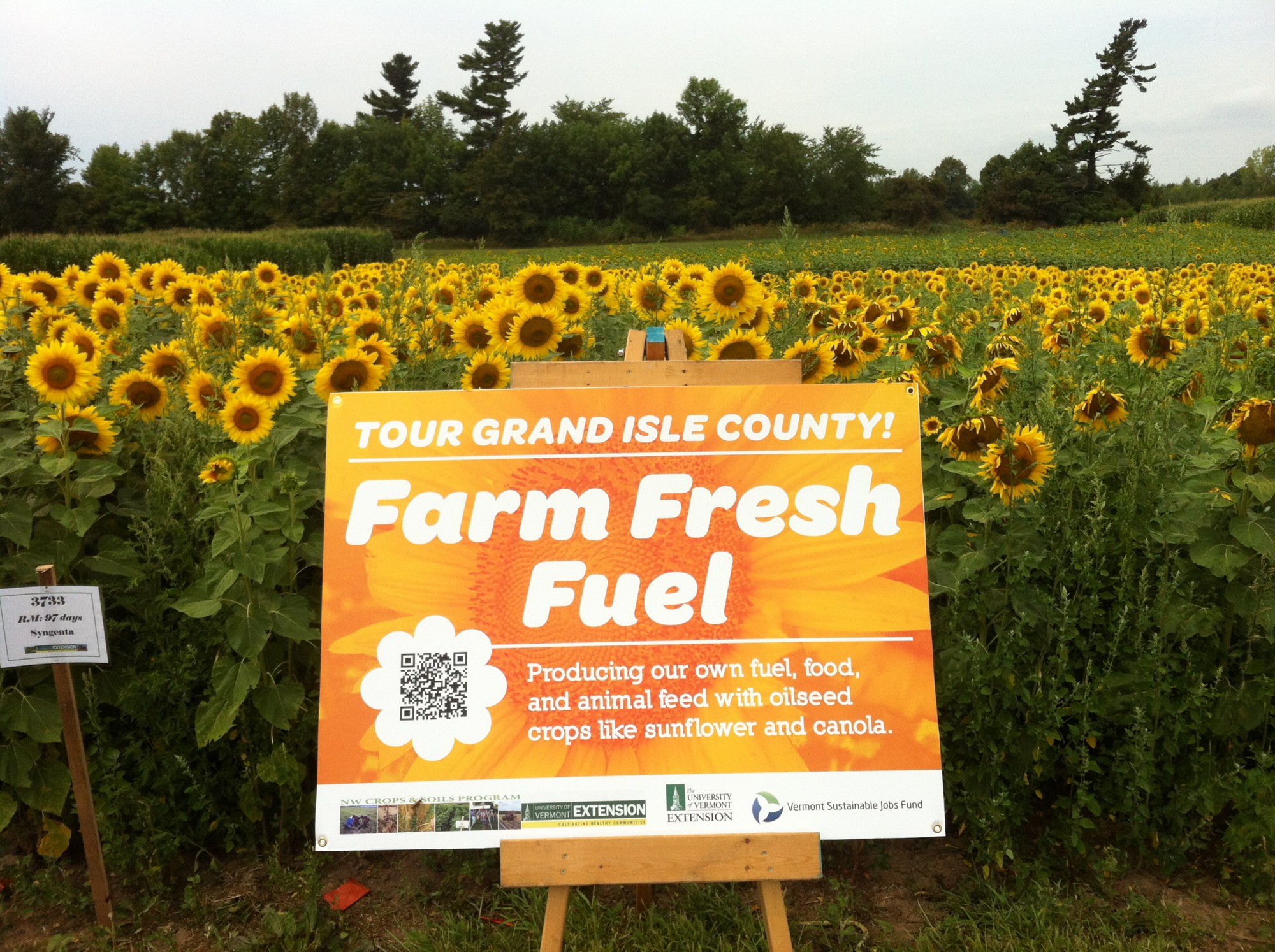Farm Fresh Fuel Project: Growing Our Own Biodiesel
December 17, 2012

A small revolution is happening in Grand Isle County, in the northwestern corner of Vermont.
On a rainy Saturday in December, a small crowd gathered in Roger Rainville’s dairy barn-turned-energy lab. They were dairy farmers, organic growers, and landowners, but this year, this group of ten growers also tried their hand at making their own biodiesel fuel.
The price of a barrel of crude oil increased over 530% between 1998—the year of the lowest price during the past 50 years—and 2012. High energy costs impact the bottom line of every Vermont farm, but home-grown biodiesel can help. Biodiesel is a renewable, low emission replacement fuel for diesel that can be affordably made, even on a small scale, from the oil extracted from crops such as soybeans, canola, and sunflower seeds. Biodiesel fuel can be used to power any diesel engine equipment or used as an additive or replacement to #2 heating oil. For several years, the VSJF Vermont Bioenergy Initiative has been accelerating the development of on-farm bioenergy production capacity through grant funding and technical assistance.
With funding from the Vermont Sustainable Jobs Fund, made possible by a congressional appropriation from the US Department of Energy through the Office of US Senator Patrick Leahy, Borderview Farm staff, including farm co-owner Roger Rainville and his daughter Natasha, and UVM Extension researchers, including Dr. Heather Darby and Hannah Harwood, guided the planting, tending, and harvesting of more than 60 acres of sunflowers. Each grower planted two to ten acres of sunflowers, all with varying results. Together, these growers produced 30 tons of sunflower seeds, averaging about 1,200 pounds per acre. While some growers saw less than that, others grew more than 1 ton per acre. In total, the growers are hoping to produce about 3,000 gallons of biodiesel and 18 tons of oilseed meal. In addition to some important lessons learned, each grower will receive their share of the bounty. Plus, the experience of these growers is contributing to a growing body of research and knowledge that will help other farms improve their fuel self-sufficiency with renewable fuels made from locally-grown feedstocks.
The learning began right away: Coordinating planting logistics was sometimes challenging when equipment was needed for other crops or larger plantings. The application of certain herbicides to prepare the fields had mixed results. Timing was essential. Birds and deer were a problem for some. Careful notes are being collected to discern important differences in approach that resulted in drastic variance in yields among growers. For example, fields planted with a corn planter were most successful, with high yields, but only when the planter moved at just the right pace. The researchers found that achieving the correct population density – not too dense, but not too sparse, either – was important. Interestingly, plots closer to Lake Champlain received little to no bird damage, while some plots further inland were often hard hit.
The harvested seeds from this year’s sunflower crop are now dry and stored in a grain bin at Roger Rainville’s farm. From the bin they’re being moved through an oilseed press to yield two products: meal and sunflower oil. The meal has value to these growers as a potential feed for livestock like dairy cows, goats, hogs, chickens, and sheep. It’s said the Amish feed sunflower meal and oil to their horses, which is what gives them their healthy and shiny coats. UVM researchers have also demonstrated the benefits of oilseed meal as a well-balanced soil amendment.
But it’s the oil that’s the point. It’s high in energy, and by a relatively simple conversion process that VSJF has helped to establish on a number of Vermont farms, the oil from these crops becomes a low cost renewable fuel. After the oil is refined into biodiesel in January and February of 2013, these farmers and land owners will have successfully grown their own fuel for their farm equipment or to heat their homes. The final volume of fuel they receive is dependent on how much seed they produced, but all have said they want to participate in the project again next spring. Some farmers may use their small amount of this year’s oil for cooking and chalk the experience up to learning; others who generated a good deal of oil are looking at a larger volume of biodiesel and real cost savings on their fuel bill.
Improving the viability of renewable energy sources on farms in Vermont contributes to the vitality of Vermont’s food system, too. Goal 22 of the Farm to Plate Strategic Plan is for food enterprises to minimize their use of fossil fuels and maximize their renewable energy, energy efficiency, and conservation opportunities. These actions will serve to grow the agricultural economy in Vermont through decreased operating costs for these businesses, with the added benefit of increased jobs, better market performance, and greater financial stability.
Stay tuned in early 2013 for the release of ten short videos on this exciting work!




